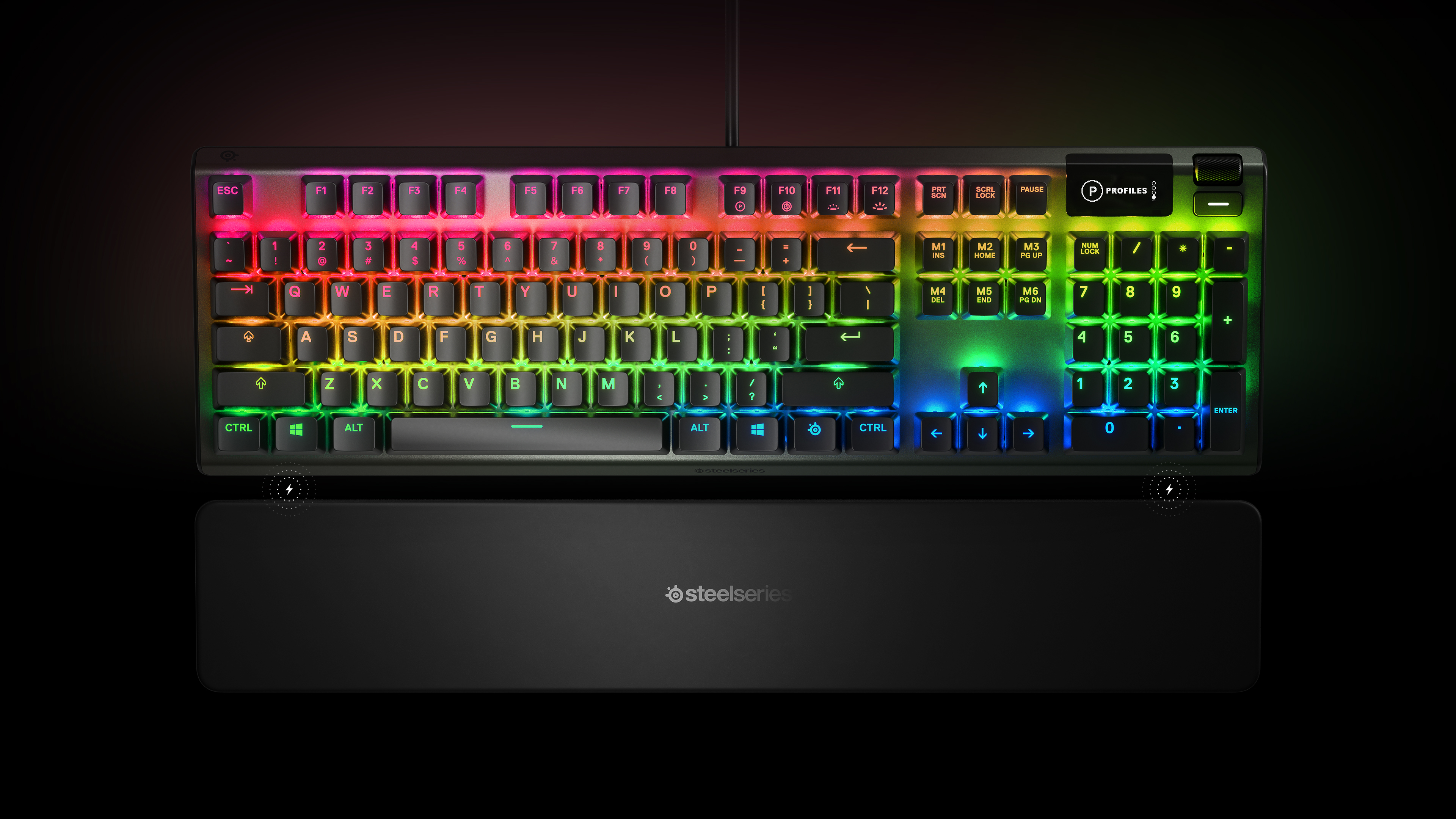
What are Hybrid Blue Mechanical Switches?
How are they similar or different from traditional blue mechanical switches?

Historically, "hybrid" is a word used fairly loosely when referring to keyboards. What needs to happen for a keyboard switch to be considered a "hybrid" mechanical?
Before we talk about hybrid switches, it's important to briefly discuss what defines a membrane switch vs. a mechanical one.
Membrane
This is the switch mechanism inside most keyboards. It's called a rubber dome or membrane switch, and was invented in the 1990's as a cheap alternative to the mechanical switches of the time.
Since they are inexpensive to produce, membrane keyboards make up 90% of keyboards in use today, but are not very satisfying to type or game on. Many membrane keyboards feel mushy and cheap, because a rubber dome is relatively soft and not tactile. They also tend to wear out over time, as the amount of pressure needed for a key to press and unpress changes as the rubber weakens.
Mechanical
In response to the drawbacks of membrane switches, there's been a big resurgence in interest for the original keyboard switch: mechanical.
To put it as simply as possible, a mechanical switch generally refers to a spring-activated switch. (You can read more about mechanical switches here.)
Aside from being more durable and higher quality, the spring gives mechanical switches a consistent tactile feel that doesn't wear out nearly as fast. It pushes back against your fingers, making typing and gaming feel snappy, tactile, and responsive.
So, what's the basic difference between membrane and mechanical?
- Membrane switch = rubber domes
- Mechanical switch = springs
The great bamboozle
When it comes to "hybrid mechanical" switches, wouldn't it be safe to assume they use a spring mechanism? After all, it's this mechanism giving mechanical switches their consistency, durability, performance, and feel.
Unfortunately, many "hybrid mechanical" switches are little more than a membrane switch with some extra reinforcement. Some even add a superfluous plastic noisemaker to sound mechanical.
At the end of the day, it's still a membrane switch. This noisemaker doesn't improve anything; it only gives the illusion of performance - similar to putting a playing card in your bike tire.
We genuinely believe adding a noisemaker or extra reinforcement to a membrane keyboard does not make it a hybrid mechanical keyboard.
Hybrid blue mechanical switches
Instead of dressing up a membrane keyboard with reinforcements or noisemakers, we started with a mechanical switch, spring and all.

Our hybrid blue switches have the same crisp, snappy, and tactile feel of mechanical because they use the same mechanism: a spring.
You can feel and hear the completion of a keystroke via a tactile bump and audible click when it activates.
Like a blue switch, it registers a keypress with a click at 2mm, bottoms out at 4mm, and requires 50cn of force to press. Because it is a mechanical switch, you can even put aftermarket keycaps on them
What makes it a "hybrid mechanical" is how the circuit connects after you press the key. We saved costs on the inside of the board by replacing the traditional gold-plated circuits with a super durable membrane actuation. This makes bottoming out the key feel more comfortable.
To summarize, the Apex 5's hybrid blue mechanical switches don't feel mechanical - they are mechanical. We simply changed how they actuate after you make a keypress.
We're proud to call these our hybrid mechanical switches, and they have allowed us to create an affordable, full-featured keyboard: the Apex 5.

Read More:

When she's not wreaking havoc as Techies in Dota 2, Megan dabbles in almost any PC game, most recently Overwatch, Hades, and Warzone.
